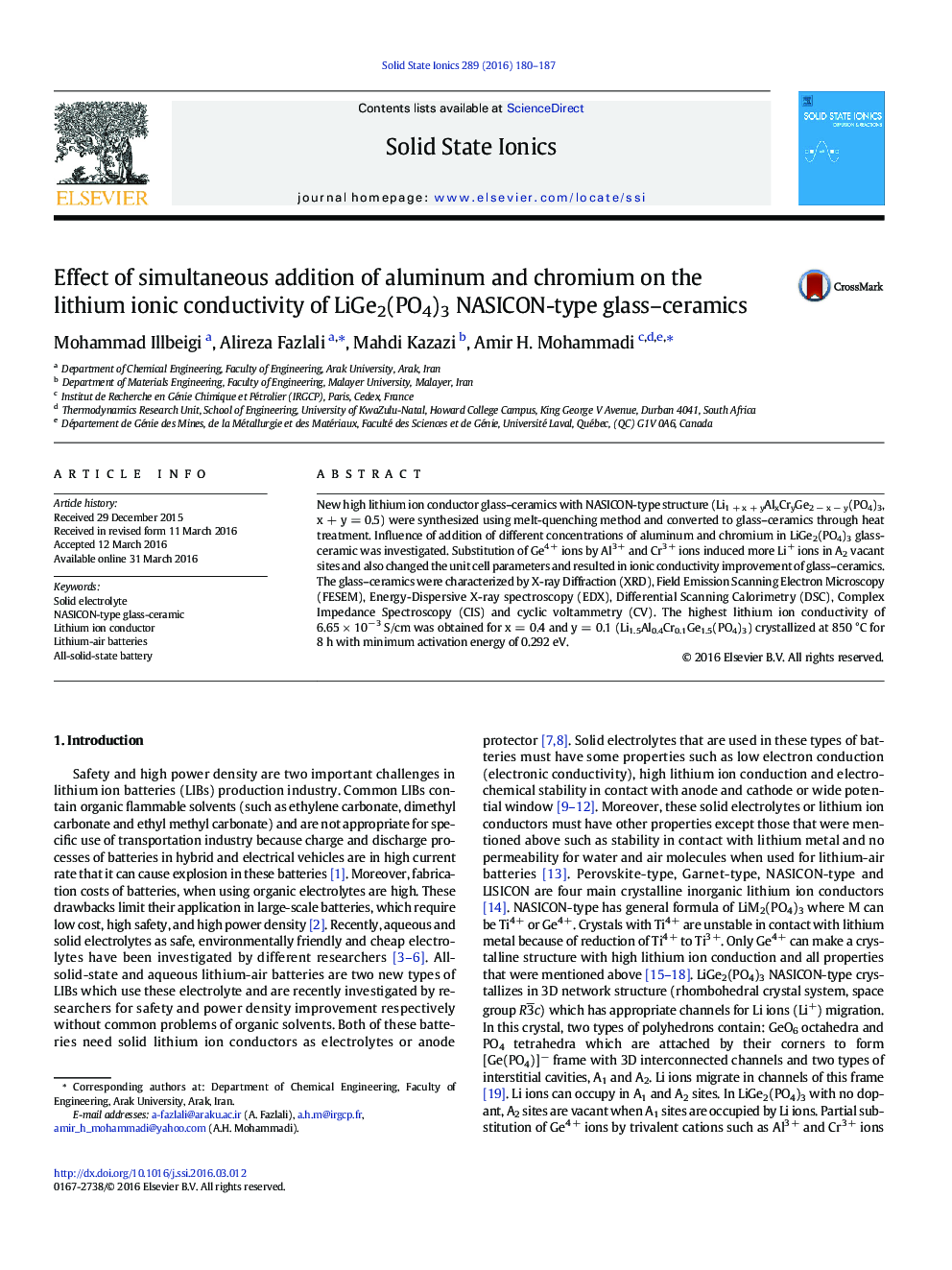| کد مقاله | کد نشریه | سال انتشار | مقاله انگلیسی | نسخه تمام متن |
|---|---|---|---|---|
| 1296167 | 1498254 | 2016 | 8 صفحه PDF | دانلود رایگان |

• High lithium ion conductor glass–ceramics with NASICON-type structure were synthesized.
• Addition of different concentrations of aluminum and chromium in LiGe2(PO4)3 glass-ceramic was investigated.
• Substitution of Ge4 + ions by Al3 + and Cr3 + ions induced more Li+ ions in A2 vacant sites.
• It also changed the unit cell parameters and resulted in ionic conductivity improvement of glass–ceramics.
• The glass–ceramics were characterized by XRD, FESEM, EDX, DSC and CIS.
New high lithium ion conductor glass–ceramics with NASICON-type structure (Li1 + x + yAlxCryGe2 − x − y(PO4)3, x + y = 0.5) were synthesized using melt-quenching method and converted to glass–ceramics through heat treatment. Influence of addition of different concentrations of aluminum and chromium in LiGe2(PO4)3 glass-ceramic was investigated. Substitution of Ge4 + ions by Al3 + and Cr3 + ions induced more Li+ ions in A2 vacant sites and also changed the unit cell parameters and resulted in ionic conductivity improvement of glass–ceramics. The glass–ceramics were characterized by X-ray Diffraction (XRD), Field Emission Scanning Electron Microscopy (FESEM), Energy-Dispersive X-ray spectroscopy (EDX), Differential Scanning Calorimetry (DSC), Complex Impedance Spectroscopy (CIS) and cyclic voltammetry (CV). The highest lithium ion conductivity of 6.65 × 10− 3 S/cm was obtained for x = 0.4 and y = 0.1 (Li1.5Al0.4Cr0.1Ge1.5(PO4)3) crystallized at 850 °C for 8 h with minimum activation energy of 0.292 eV.
Journal: Solid State Ionics - Volume 289, June 2016, Pages 180–187